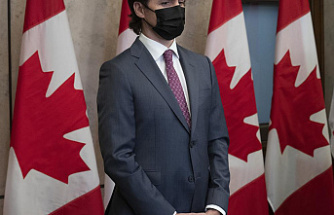Road money
Municipalities in Westmoreland County, like those throughout the state, will benefit from increased liquid fuels payments — annual allocations from the state to local governments that are earmarked for construction, maintenance and repair of public roads.
Annual amounts awarded to Westmoreland municipalities since lawmakers passed Act 89:
2017: $13.99 million
2016: $13.4 million
2015: $11.4 million
2014: $10.4 million
2013: $9.6 million
To view the complete list of municipal allocations statewide, visit bit.ly/2mHOM2P.
Source: PennDOT
Sign up for one of our email newsletters.
Updated 12 hours ago
It's pay day for Pennsylvania municipalities, which on Wednesday will receive more than $466 million in state funding for local roads. Nearly $14 million is headed to Westmoreland County communities.
The statewide figure and the county's subtotal represent a roughly 5 percent increase from last year's liquid fuels payments — annual allocations from the state to local governments that are earmarked for construction, maintenance and repair of public roads.
PennDOT officials attributed the increased funding to Act 89, a 2013 statewide transportation overhaul that generates billions in new revenue for roads, in part, by enacting the nation's highest gasoline tax.
In 2013, municipalities received about $321 million — a figure that has increased by $125 million in four years.
Unity is slated to receive about $866,000 and will spend the money on paving projects, seal coating improvements and winter road maintenance, Supervisor Michael O'Barto said.
“I never want to see the gas tax go up, but what I can tell you is that money is being well spent in Unity Township on the road,” he said.
Unity, which owns about 141 miles of roads and has a population of almost 23,000, budgets about $2 million to road department costs, with general fund money adding to the liquid fuels payments. O'Barto said the township will assess local road conditions once winter ends to decide how best to spend this year's money.
Liquid fuels payments are determined based on a formula that equally weighs a municipality's population as of the last census and miles of locally owned roads eligible for funding, a PennDOT spokeswoman said.
Pittsburgh, for example, is slated to receive about $8.5 million based on a population of nearly 306,000 residents and more than 893 miles of locally owned roads.
Hempfield, with a population of more than 43,000 and 222 miles of road, will receive about $1.5 million.
Township Manager Andrew Walz said officials are building their annual road improvement “wish list.” That list, which could go before supervisors at a March 22 work session, will be used along with cost estimates to finalize a project list.
North Huntingdon will receive about $1 million based on a population of 30,600 and 144 miles of local roads. Assistant Manager Michael Turley said the township's road program has grown in recent years, thanks largely to liquid fuels payment increases. Five years ago, the program's budget was between $350,000 and $500,000. This year, the program's base budget is $1.25 million and eventually could total more than $1.4 million.
“It's been really helpful for our road program,” Turley said. “We really felt like we were falling behind. This is the type of thing where a problem doesn't happen overnight. But over several years, if you underfund a road program, you just can't catch up.”
New Kensington is to receive $427,000 for its 58 miles of roads. Neighboring Arnold, with about 5,100 residents and 22 miles of road, will get about $165,000.
Manager George Hayfield said city officials are glad the annual allocation is increasing, but the amount is still not enough to cover major improvements. Instead, it is earmarked for street lighting, patching roads, salt purchases and winter maintenance, while federal Community Development Block Grants provide funding for more ambitious street projects.
State officials on Tuesday also announced plans for PennDOT to invest an extra $2 billion over the next decade in roadway, highway and bridge improvement projects through a new Road Maintenance and Preservation program. Officials said plans to cap and rollback Motor License Fund payments to state police over the next 10 years allows for the additional investment.
PennDOT estimates interstate reconstruction costs about $5.2 million per two-lane mile. Resurfacing one mile of two interstate lanes costs about $1 million. It costs about $24,700 to seal coat a mile of lower-volume roads. Resurfacing lower-volume roads costs about $101,400 per mile, while total road rehabilitation costs $910,000 per mile, according to PennDOT.
Michael Walton is a Tribune-Review staff writer. Reach him at 724-850-1290 or mwalton@tribweb.com.
Our editors found this article on this site using Google and regenerated it for our readers.









